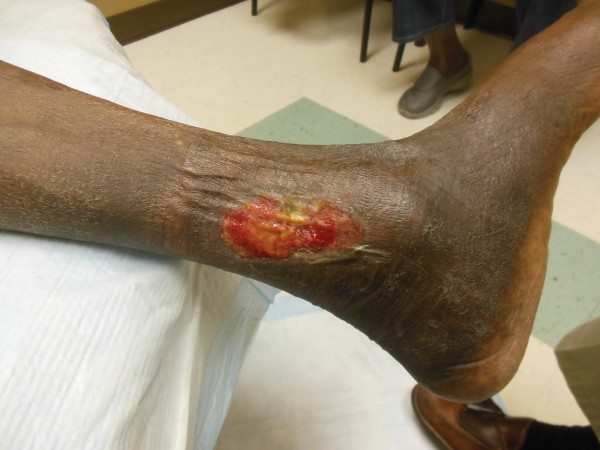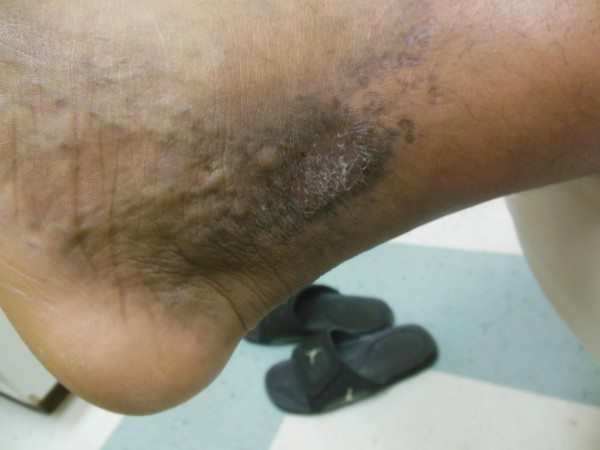Venous Ulcers
A leg ulcer is simply an area where the covering of skin has been completely lost and the fatty tissues beneath all the skin layers are now exposed.
While a seemingly minor trauma to the skin may have occurred and may be felt to be the initiator of the ulcer, most traumas do not remove the complete skin layer.
Leg ulcers in the majority of patients (70-80%) are caused by a complete break down of all skin layers over an area of abnormally high internal vein pressure. The most common cause of this ‘vein high blood pressure’ (again about 80% of the time) is incompetence of the valves in a vein leading to reflux of blood in leg veins. Instead of the veins carrying blood steadily back to the heart, valves within leg veins fail so blood falls backwards, then pools and stagnates in the meshwork of veins which sit below the knee. This often leads to swelling of the ankles and feet, inflammation of the overlying skin, and staining of the skin from the degradation products of the now trapped blood cells.
Inflammatory chemicals that are released from these stagnant and trapped blood cells can actually digest away the skin layers which sit above the engorged veins. The result is an ulcer that exposes a raw, but not usually deep bed of tissue often with fluid weeping from it.
Treatment of venous ulcers consists of cleansing the wound with soap and water, debridement if needed, and special compression dressings of multiple (3-4) layers, usually changed weekly by a wound specialist.
Unfortunately, even when the cause of the ulcer diagnosis is definitely due to vein malfunction and wound care is optimally executed, it can easily take 12 weeks for such a wound to heal. What is more, even if the ulcer heals, the recurrence rate of a venous ulcer is especially high without subsequent surgical intervention. In fact, the vast majority will recur within 5 years without performing further surgical measures.
Thankfully, a minimally invasive laser based closure of culprit veins can now be performed simply and safely within the offices of Vein Specialists of Tampa. There is no longer an expectation of general anesthesia, hospitalization or prolonged recovery.





